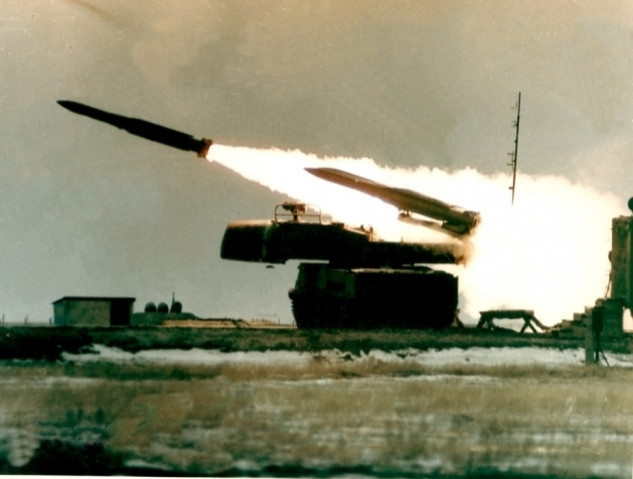Russian army expo 2017: Autonomous anti-aircraft missile system unveiled
'Yermak' can reportedly detect targets 250km away and strike up to 120km with an altitude of 28km.

Russia has unveiled a fully automated, AI-powered anti-aircraft defence system, which can interact and communicate with other missile systems on the battlefield, at this year's Russian army expo 2017. The Yermak will comprise automated, robotised target detection systems, robotised launchers, and other small-range modules.
Weapons maker Tikhomirov Research Institute of Instrument-Making, which unveiled the "Yermak", labelled it as medium and small range missile systems. Tikhomirov has said that Yermark will become part of air defence troops' arsenal by 2030, Tass reports.
"The Yermak anti-aircraft missile system is designed for the multi-layered defence of ground troops' mobile groupings and ground facilities against an enemy's massive air strike," said a release at the forum.
Russia has made advances in developing AI-powered cruise missiles that can choose their own targets.
Yermak will be capable of detecting airborne targets at distances of up to 250km and have a striking range of between 0.2 to 120km and fire to an altitude of up to 28km while simultaneously engaging 48 targets.
According to the release, Yermak will provide multi-layered defence through interactions and by working alongside control posts of S-300 long range surface-to-air missile systems (SAM), Tor combat vehicles-mounted anti-aircraft low to medium altitude missile systems, and Tunguska self- propelled antiaircraft missile/gun systems.
Automation will play a key role in how the Yermak works, according to the release, offering the possibility of making use of the system remotely from control posts. Such posts can function in "a fully automated mode" with only minor adjustments made by human operators.
A fully automated, AI-powered defence system like Yermak that can interact and possibly communicate with a full suite of other missile systems could be part of the Russian army by 2030. Russian arms manufacturers this year seem to have shifted their focus toward creating AI weapons. From their air expo earlier this year to the army forum that just wrapped up, the main showcase in both cases has been automation and the creating of weapons that can think and fire on their own volition.
This month, 116 leaders of the world's foremost tech companies petitioned to the United Nations' International Joint Conference on Artificial Intelligence calling for a ban on killer robots, but researchers have not stopped developing them yet.
The US and the UK are also making strides in AI weapon technology. The petition sent to the UN made a mention of the vulnerability that AI weapons have and that they can be "hacked to behave in undesirable ways".
© Copyright IBTimes 2025. All rights reserved.





















